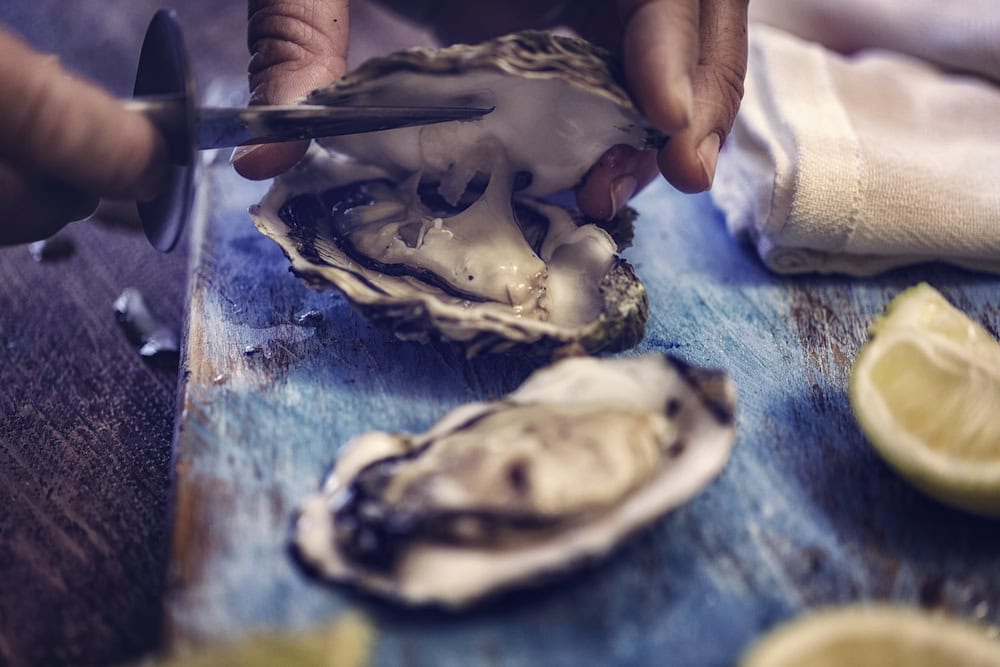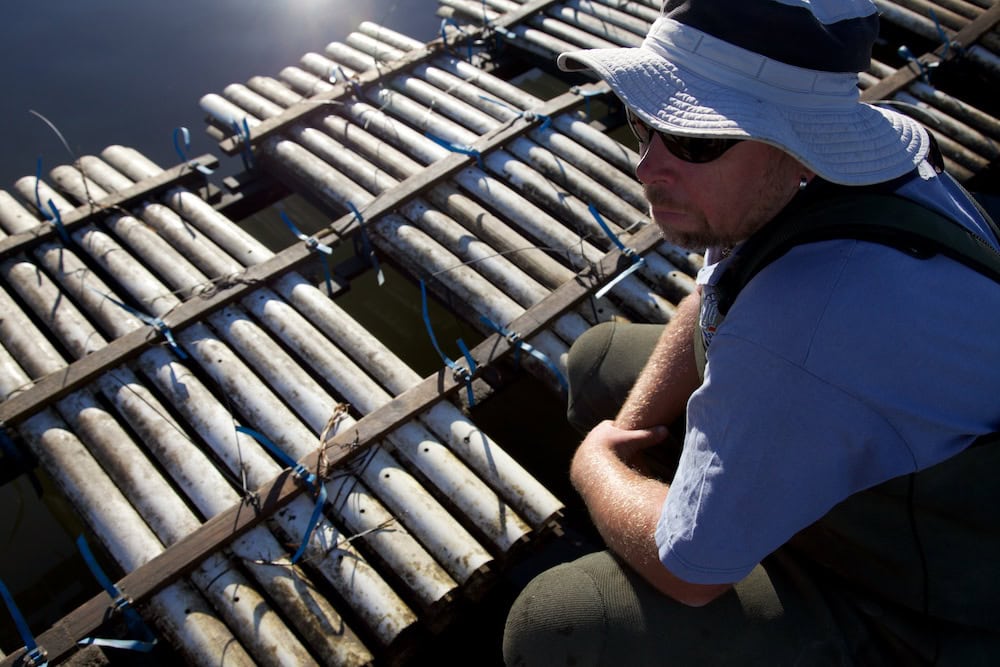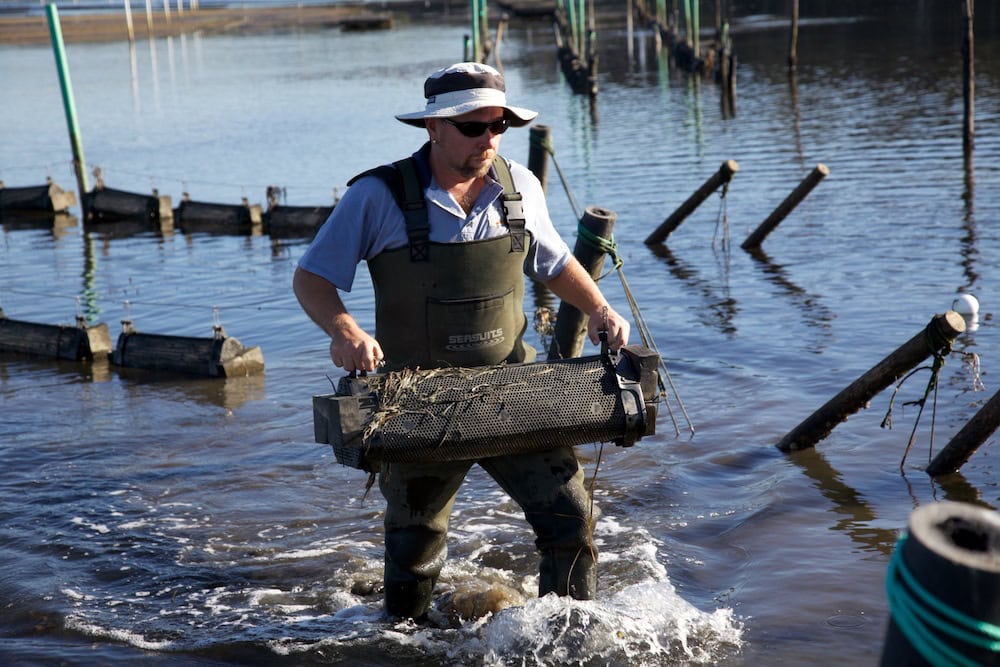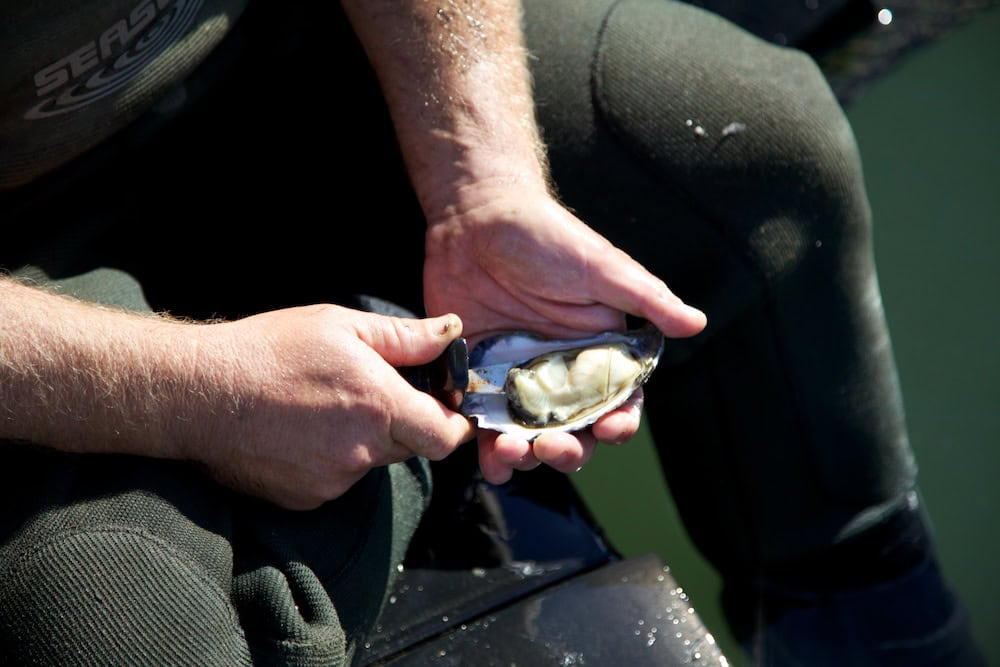Trials into a new human vaccine for Q Fever have been given a $1.87 million…
Oyster farming: a new wave is ahead

While the deliberate cultivation of oysters in Australia started in the 1870s � making oyster farming the oldest aquaculture industry in NSW � oyster middens (piles of hells) in the Sydney area have been dated as far back as 10,000 BC. Indigenous Australians have understood for a long time just what a valuable, and delicious, food source oysters are, and Australians today are coming to the same conclusion in growing numbers.
�Over the past five years there has been an increase in sales and farm gate prices of up to seven per cent,� reports Caroline Henry, Chair of the NSW Farmers Oyster Committee and Owner of Wonboyn Rock Oysters. �I believe part of that is because farmers have become more professional in their approach and are better educated about environmentally sustainable farming methods. We are now fully mindful that we are farming in public water and gone are the days where we could farm how we wanted to.

�Another factor is an increase in the number of marketing groups working between the farmer and the wholesalers. This has given farmers more time to concentrate on what they do best, and has given our industry a better pricing system.�
In 2018-2019, the NSW oyster industry produced 76 million oysters worth $59 million at the farm gate. While three species of oyster are grown in NSW � the Sydney Rock Oyster, the Pacific Oyster and the native, flat oyster � the Sydney Rock Oyster accounts for over 90 per cent of production in the state. Importantly, the Sydney Rock Oyster can live out of water for up to three weeks � longer than any other oyster variety in the world. This means that fresh, unfrozen product can be available across Australia throughout the year.
�Over the last 10 years there has been a high turnover of farms to younger people with a whole new perspective on farming and how it can be made into a viable business,� explains Shane Buckley, Owner and Operator of Wapengo Rocks, Australia�s first organically-certified oyster farm.
Known as the �canaries of the waterway�, oysters are an excellent indicator of estuary health, and oyster farmers are often proactive environmentalists.
�Emphasising the sustainability of our practices and the quality of our product has changed public perception of the industry, resulting in an increase in farm gate returns. This has allowed farmers to reinvest in their farms, further improve their practices and continue to farm in a sustainable framework,� continues Buckley.
Murky waters ahead
Given the revitalisation of oyster farming in recent years, there was reason to hope that 2020 was going to be landmark year for oyster farmers. But the compounding crises of drought, bushfires and COVID-19 have proved an overwhelming challenge for many.

�Drought on the land is also a drought in the water,� laments Henry, who sold 40,000 dozen oysters in 2019. �Lack of water flow reduces food sources in the estuaries, increases salinity and water temperature, and, in some cases, estuaries shoal and close. This can slow the growth rate of oysters and cause increased mortality.�
Each female oyster can release up to 20 million eggs, but only 0.1 per cent survive, so if conditions aren�t optimal it can be hard to see decent growth. Smoke and ash from this year�s bushfires caused major water quality issues for many oyster farmers up and down the coast, and tourists fled in their thousands so the usual holiday trade collapsed overnight. And then, the COVID-19 pandemic hit Australian shores.

�Due to lockdowns, there was no longer a market for oysters as wholesalers and restaurants were closed. As the lockdowns eased there has been a slow return to sales, but not in the same numbers,� says Henry. In June, the NSW Government announced a $9 million support package for NSW seafood industries, including $2.1 million in fee waivers and rent relief for the Aquaculture industry. But, long-term problems still remain.
�With farmers not being able to sell their oysters they are faced with the added problem of stock. Sydney Rock Oysters have a three-year growth cycle. But, if you haven�t sold this year�s stock, you don�t have enough infrastructure and leased area to restock. This will cause an issue in three years� time as farmers won�t have stock to harvest.�
Oysters on the homefront
Despite the rollercoaster ride of 2020, oyster farmers have a lot to look forward to this summer season. With imports down due to COVID-19, there�s more room in the holiday and festive market for domestic product. �If everyone does the right thing around the COVID-19 situation I believe business will be great over the summer, especially on the local market level,� forecasts Buckley.
�A lot of people will holiday domestically within NSW, predominantly on the coast, so there will be a great opportunity to support the local economy with seasonal products like oysters. But, the challenge within the industry will be to maintain farm gate prices and not end up in a desperate discount war to off load product.�

Additionally, Oysters Australia has been working with farmers to make progress in the premium �at home consumption� market, shifting the perception of oysters as an expensive indulgence when dining out, to one about creating �special moments� at home. �Many farmers have become quite innovative, using social media to target specific markets and thinking of other ways to move their stock, like home deliveries. There is generally a feeling of optimism for the coming year,� notes Henry.
What 2021 will bring is still uncertain, though Buckley believes this may be the time for NSW to look beyond its own backyard. In 2014-2015, Australia was exporting close to 500,000 oysters, but in the past financial year it was just over 100,000.
�The future for oyster farming is very exciting. The sustainable food movement is surging and Sydney Rock Oysters are touted as being the golden egg of oysters worldwide. I see a very commanding place for us in the export arena. Not to say that the domestic market isn’t strong and bounding ahead, but to be able to have our beautiful oysters on an international stage is an opportunity not to be missed.�

If you enjoyed our story on oyster farming, you might like to read our feature on the garlic industry.








